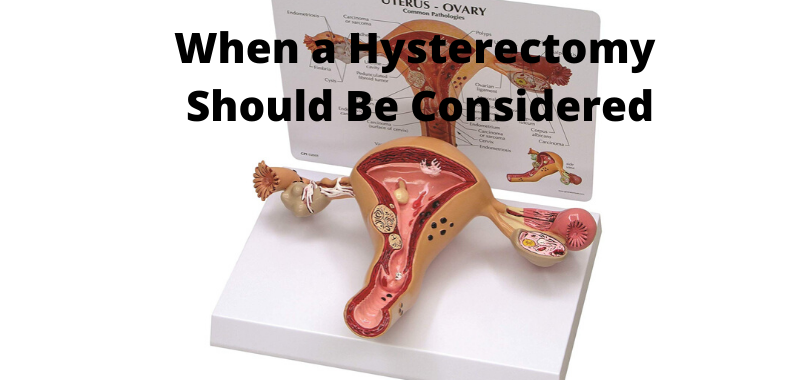As a healthcare practitioner with a special interest in women’s health, more and more I am seeing women presenting with all the symptoms of Adenomyosis. This is why this post is called “Let’s Talk About Adenomyosis”.
Just like endometriosis, many women have had this condition missed and dismissed and then have to suffer the consequences and think that they just have to put up with it month after month.
Some women are completely unaware that they have adenomyosis. Those that have already been diagnosed with endometriosis often believe that all their symptoms are just related to this disease only, when it fact, they could have two diseases creating all their issues.
Many of the symptoms are the same as endometriosis, except that women will usually have heavier menstrual bleeding, or irregular bleeding issues.
Women can have both endometriosis and adenomyosis at the same time and now research is showing that they are basically one in the same disease, but just in different locations.
What is Adenomyosis?
Adenomyosis is defined as the presence of endometrial glandular tissue occurring deep in the endometrial lining (myometrium). The exact cause of adenomyosis is unknown, but current research is showing that it is a similar process to how endometriosis is caused.
Histologically both endometriosis and adenomyosis are one in the same disease state, but just occurring in different locations. We know that both diseases are driven by estrogen and that they have all the same signs and symptoms. Adenomyosis and endometriosis are not caused by estrogen dominance either. Even small amounts of estrogen will drive both diseases.
The only difference between the two disease states is that adenomyosis typically causes more heavy bleeding symptoms. The abnormal bleeding occurs when the ectopic endometrial tissue induces hyperplasia and hypertrophy of the surrounding myometrium. This causes uterine enlargement and subsequent changes in vascularisation (the new vessels may also be more fragile than usual) in addition to an increase in the surface area of the endometrium.
One of the key diagnostics for adenomyosis is the presence of an enlarged uterus on ultrasound, or via MRI. The enlarged uterus can also impact the surrounding structures and often impacts the bladder, leading to urinary frequency and other bladder issues.
Adenomyosis can also have the same bleeding symptoms as fibroids but correct diagnosis and investigations, will differentiate the two and ensure correct management moving forward.
What Are the Symptoms of Adenomyosis?
As mentioned previously, adenomyosis has all the same symptoms as endometriosis. Just like endometriosis, some women often have no symptoms (are asymptomatic), and are only diagnosed when they are having issues trying to conceive.
The main symptoms of Adenomyosis are:
- Heavy, prolonged menstrual bleeding
- Severe pain and menstrual cramps
- Abdominal pressure and bloating
- Bladder issues (frequency, urge frequency, incontinence)
- Anaemia
Other associated symptoms such are:
- Irregular bleeding
- Pain with bowel movement
- Irritable Bowel like symptoms
- Urinary Tract Infection (UTI) like symptoms
- Fatigue
- Mental and emotional disturbances (depression, premenstrual dysphoric disorder)
- Pain with intercourse
- Infertility
- Musculoskeletal pain
- Lack of quality of life
Diagnosis of Adenomyosis.
Ultrasound is the most common (and indeed most useful) first-line imaging tool used to diagnose adenomyosis in a women presenting with any abnormal uterine bleeding. While ultrasound cannot definitively diagnose adenomyosis, it can help to differentiate and rule out other conditions with similar symptoms.
Sometimes saline solution is injected in the uterus at the same time as ultrasound is performed to give better imaging and to help evaluate the symptoms associated with adenomyosis. This is called sono-hysterography.
While trans-vaginal ultrasound (TVU) can be used, it can also miss the disease, especially if the user doesn’t have an expert eye, or extra training, or specialises in the diagnosis of adenomyosis.
MRI is considered a much better tool for the finding of adenomyosis, but it is a more expensive option. Even though ultrasound is a cheaper option, it can be inaccurate.
Blood tests cannot diagnose adenomyosis, or endometriosis.
The only proper way to definitely diagnose adenomyosis is via surgical intervention and a biopsy, but this is rarely done prior to a hysterectomy due to risk factors of damage to the uterine lining. Unlike endometriosis, the disease cannot be excised and the only cure for adenomyosis is hysterectomy.
Treatment and Management Options For Adenomyosis
The treatment and management of adenomyosis will depend in part on your presenting symptoms, their severity, and whether you have completed childbearing.
The medical management options for adenomyosis are usually in the form of hormonal therapy (the Oral Contraceptive Pill, Mirena IUS or other types of progestogen therapy) or surgical.
The surgical options are endometrial ablation, uterine artery embolism and hysterectomy. When considering surgical therapy it must be acknowledged that endometrial ablation and uterine artery embolism is less effective compared with the more definitive but more invasive option of hysterectomy.
Research does show that a significant portion of women, who choose to do endometrial ablation, or uterine artery embolism, will end up needing a hysterectomy. Hysterectomy is not the major procedure it was years ago and many are done laparoscopically and done intravaginally. This also helps with the recovery time. It all gets back to quality of life for many women with endometriosis. This is why hysterectomy is now a better option than other surgical interventions.
While hysterectomy is not something to be taken lightly, we do need to be real about quality of life and the ongoing pain, other associated symptoms, long term bleeding and the dangers of long term anaemia that adenomyosis can cause to a woman. Many women often quote getting their life back and wished that they had the hysterectomy sooner, rather than putting up with the lack of quality of life. Hysterectomy is a cure for adenomyosis, but it is not a cure for endometriosis.
Other Management Options For Women With Adenomyosis
- Medical treatments(pain medications, iron infusions)
- Complementary medicines (Acupuncture, Chinese herbal medicine, vitamins and nutrient support),
- Nutrition and diet
- Counselling & Psychology
- Meditation and Mindfulness
- Pain management clinics
- Physiotherapy
- Exercise therapy(weight baring exercise, resistance training)
- Core strengthening(pilates, yoga)
- Pelvic floor management(Pilates, Kegels Exercises/Kegels balls, Vaginal stone eggs),
- Urodynamics
For women who do not want to consider surgical options, adenomyosis requires a multimodality/team approach for ongoing management, treatment and support. In most cases it will need a combination of the therapies above, or all of them, in conjunction with medical interventions and medicines.
In nearly all cases, treatment and management is the same as endometriosis, except there needs to be more focus on the heavy bleeding symptoms. I always apply a multi-modality approach to assist all my patients who have adenomyosis, or endometriosis, or both combined.
Mild symptoms may be treated with over-the-counter pain medications, complementary medicines and supplements and the use of heating pads to ease pain and cramps. It is important to talk to your healthcare practitioner about treatment options to suit your individual needs and individual symptoms.
Outlook For Women With Adenomyosis
Adenomyosis is not a life-threatening condition, although if some symptoms, such as anaemia and emotional disturbances, aren’t managed properly, or early on, it could potential be life threatening. Many of the symptoms such as heavy bleeding, pelvic pain, pain with intercourse, anaemia and bladder and bowel issues can, and do negatively impact a woman’s life.
Women with adenomyosis are often anaemic and long-term anaemia can have serious health consequences. See my post of serious consequences of iron deficiency. Click here
Many women with adenomyosis, if not all, will need an iron infusion if their iron levels are low. See my post “Could you need an Iron Infusion?”
While surgical options such as hysterectomy can cure adenomyosis, there are both medical and complementary medicines available that may help alleviate the symptoms of adenomyosis.
Adenomyosis and associated symptoms can resolve on their own after menopause. If women have endometriosis as well, they will often require ongoing treatment and management after hysterectomy, as hysterectomy does not cure endometriosis. As mentioned previously, hysterectomy will cure adenomyosis.
Anyone with symptoms of adenomyosis should consult a medical specialist, a healthcare practitioner that specialises in adenomyosis and endometriosis.
Final Word
If you do need help and assistance with the management of adenomyosis, the please call my friendly staff to find out how I may be able to assist you. My motto is ‘no stone left unturned’ and I apply this to every person I see and help. I also have a network of other healthcare professionals I work with as well.
Regards
Andrew Orr
-No Stone Left Unturned
-Master of Women’s Health Medicine and Master of Reproductive Medicine
-The Endometriosis Experts (incorporating adenomyosis as well)

